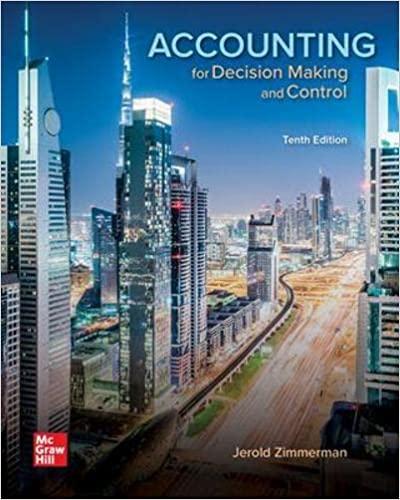Easton Taylor & Beckett LLC (ETB), an enterprise risk management (ERM) firm, offers IT and security consulting
Question:
Easton Taylor & Beckett LLC (ETB), an enterprise risk management (ERM) firm, offers IT and security consulting services including network and IT security risk assessment, computer forensic services, IT audit services, regulatory compliance, and attestation services for clients in the food processing industry.
Until recently, ETB has been organized around three regional offices (Boston, Chicago, and Atlanta), each treated as a separate profit center. The corporate office manages the three regional offices (human resources, accounting, payroll, marketing, etc.), develops the specialized enterprise risk management products, and makes them available for use by the three regional offices. The following table summarizes the operations of ETB when it had only three regional offices.

Direct cost represents the cost incurred by the regional office to provide ERM services to clients, such as consulting labor, travel, and so on. ?Own indirect costs? represents costs incurred by the regional office (occupancy costs, training, etc.) that are not directly traceable to a particular client. In addition to the costs incurred by the regional offices (direct and indirect costs), ETB incurs corporate expenses (executive officers, occupancy costs, IT, tax compliance) of $3,780,000 to manage the entire firm and to maintain and develop the ERM tools offered to ETB clients through the regional offices.
Required:
a. Calculate the profitability of each of the three regional offices after allocating the corporate expenses to the three offices using revenues as the allocation base.
b. What is the relative profitability of the three regional offices (first, second, and third most profitable) after allocating corporate expenses?
c. At the end of last year, ETB acquired a similar ERM consulting firm in San Francisco. To support the expanded operations, ETB expects to incur an additional $500,000 of corporate expenses. The following table provides information regarding the operations of ETB as if the San Francisco office had been part of ETB for the entire year.?
Calculate the profitability of each of the four regional offices after allocating the total corporate expenses ($4,280,000) to the four offices using revenues as the allocation base.
d. What is the relative profitability of the four regional offices (first, second, third, and fourth most profitable) after allocating corporate expenses?
e. Compare the relative profitability of the three original offices (Boston, Chicago, and Atlanta) before [part (b)] and after the acquisition of the San Francisco office [part (d)]. Analyze and discuss why the relative profitability of the three original offices (Boston, Chicago, and Atlanta) does or does not change with the acquisition of the San Francisco office.
f. Comment on the appropriateness or inappropriateness of ETB?s current cost allocation methodology.
Step by Step Answer:

Accounting For Decision Making And Control
ISBN: 9781259969492
10th Edition
Authors: Jerold Zimmerman





